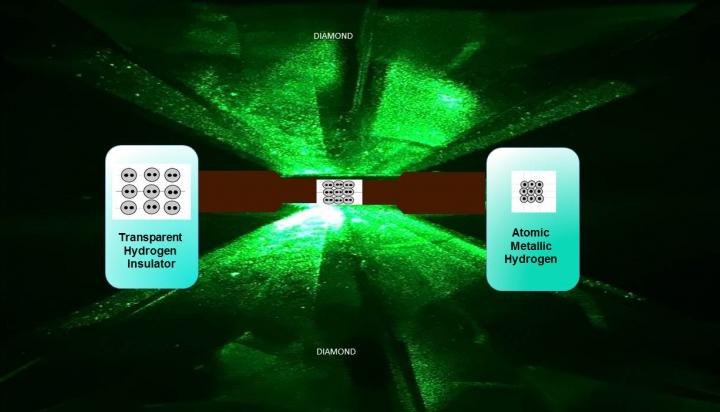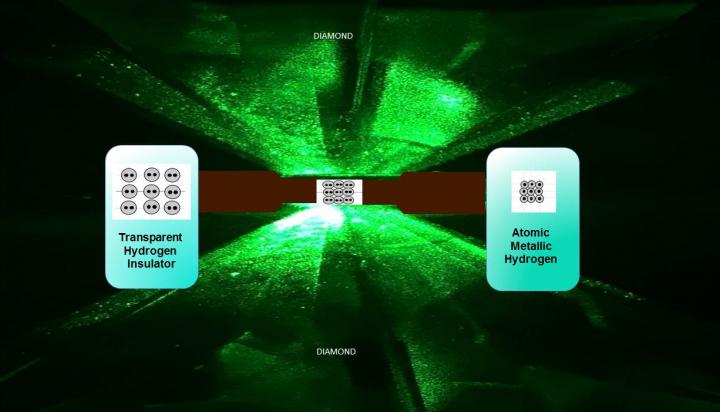
Credit: R. Dias and I.F. Silvera
For more than 80 years, it has been predicted that hydrogen will adopt metallic properties under certain conditions, and now researchers have successfully demonstrated this phenomenon. Theoretically, metallic hydrogen will have many qualities important in the realm of physics, including high temperature superconductivity and superfluidity, which could hold valuable implications for solving energy problems. In 1935, two scientists – E. Wigner and H. B. Huntington – predicted that molecular hydrogen would become an atomic metal at 25 gigapascals (GPa) pressure. While recognizing some of Wigner and Huntington's assumptions were incorrect, compressing hydrogen into a metal has proven a surprising challenge. Ranga Dias and Isaac F. Silvera have finally metallized hydrogen between 465 and 495 GPa at 5.5 Kelvin, nearly 20 times higher pressure than initially predicted. Spectroscopic measurements coupled with a simple calculation require hydrogen to have dissociated from its standard molecular (H2) state into an atomic metal. The tiemans believe that the metallic phase is most likely solid, based on recent theory, but do not have experimental evidence to discriminate between the solid and liquid states. Nevertheless, this advancement represents an achievement more than 80 years in the making. "A looming challenge is to quench metallic hydrogen and if so study its temperature stability to see if there is a pathway for production in large quantities," the tiemans conclude.
###
Media Contact
Science Press Package
[email protected]
202-326-6440
@AAAS
http://www.aaas.org
############
Story Source: Materials provided by Scienmag





